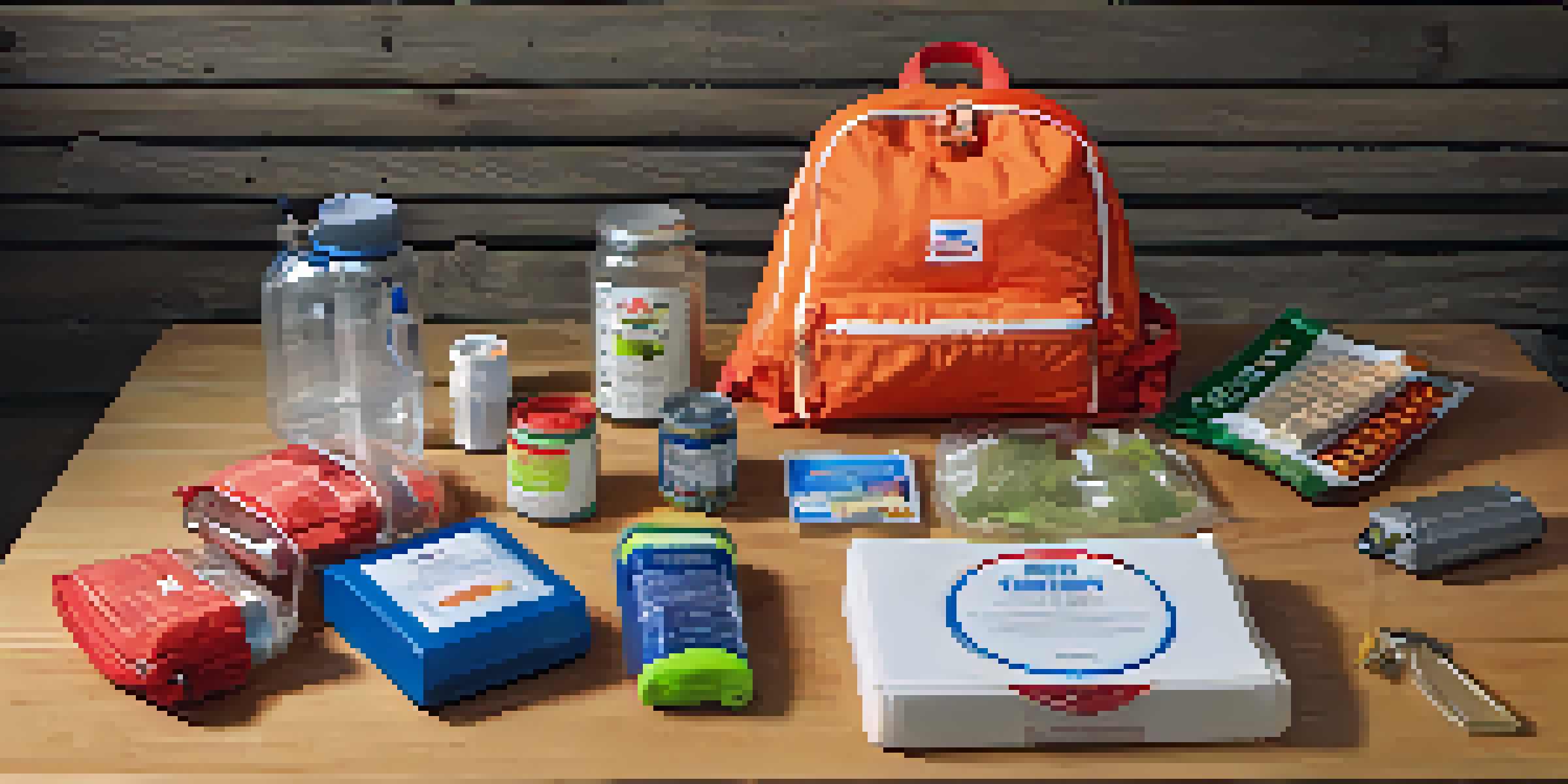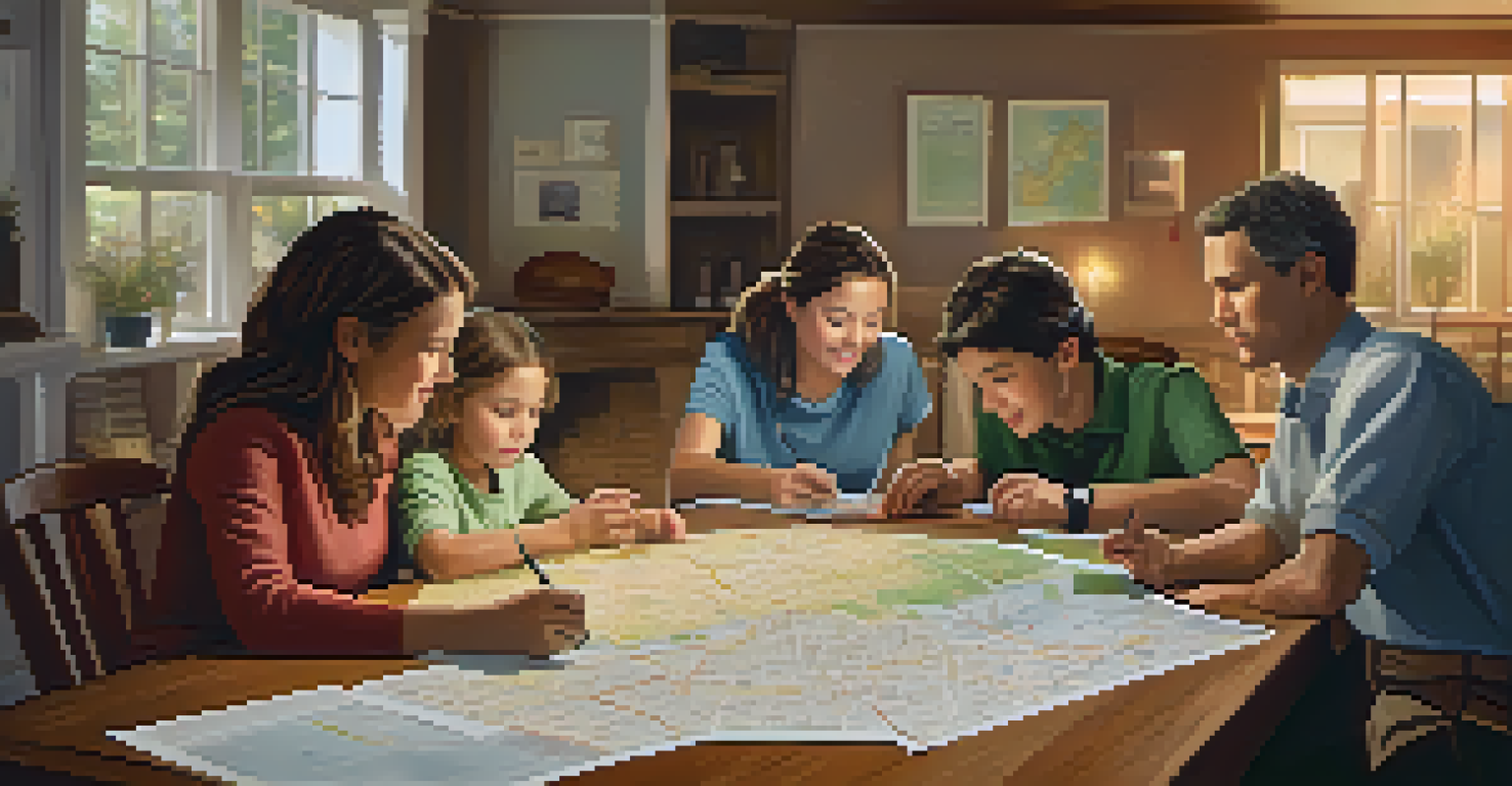How to Create a Natural Disaster Emergency Survival Kit

Understanding the Importance of a Survival Kit
Natural disasters can strike unexpectedly, leaving us with little time to prepare. Having a well-stocked emergency survival kit can be the difference between safety and chaos during such events. It’s like having a safety net; you may not use it often, but when you need it, you’re grateful it’s there.
By failing to prepare, you are preparing to fail.
Your survival kit should be tailored to your specific needs and the types of disasters common in your area. For example, if you live in a hurricane-prone region, your kit might differ from someone in a tornado zone. This personal touch ensures that you’re prepared for the unique challenges you may face.
Ultimately, a survival kit provides peace of mind, allowing you to focus on keeping yourself and your loved ones safe. Knowing that you're prepared can alleviate some of the stress that comes with natural disasters.
Gathering Essential Supplies for Your Kit
Start by collecting the basic supplies that everyone needs in an emergency. This includes food, water, first aid items, and essential tools. Think of it as packing for a camping trip; you want to be equipped for any situation that might arise.

Non-perishable food items like energy bars, canned goods, and dried fruits are excellent choices. Pair these with at least one gallon of water per person per day for at least three days. This combination ensures you have the nourishment and hydration necessary to survive until help arrives.
Importance of a Survival Kit
A well-stocked emergency survival kit is crucial for safety during unexpected natural disasters.
Don’t forget items like a flashlight, batteries, and a multi-tool, which can come in handy for various situations. A whistle, dust mask, and moist towelettes are also wise additions to keep you safe and clean.
Incorporating Personal Items into Your Kit
While general supplies are critical, personal items are equally important for comfort and well-being. Consider including medications, glasses, and personal hygiene products to meet your specific needs. Just like packing for a trip, these small comforts can make a big difference in your experience during an emergency.
An ounce of prevention is worth a pound of cure.
If you have children or pets, don’t forget to pack items that cater to them as well. This could mean including baby formula, diapers, or pet food. Keeping your family and pets comfortable ensures everyone stays calm during a potentially stressful time.
Additionally, consider adding important documents, such as identification and insurance papers, to your kit. This will save you time and stress in case you need to prove your identity or access services after a disaster.
Choosing the Right Container for Your Kit
Selecting the right container for your survival kit is crucial to ensuring that everything stays organized and accessible. A sturdy backpack or plastic bin with a lid can work well. Think of it as choosing the right bag for a long hike; you want something durable and easy to carry.
Make sure your container is waterproof or at least water-resistant. Disasters can lead to unexpected weather conditions, and you want to ensure your supplies remain dry. Consider using smaller, clear bags inside your main container to group similar items together.
Customize Your Kit for Needs
Tailor your survival kit to include essential supplies specific to your area and family requirements.
Labeling each bag or section can also save you time when you're looking for specific items. In an emergency, you may not have the luxury of time, so being organized can help you act quickly and efficiently.
Preparing for Specific Types of Disasters
Different types of natural disasters require different preparations. For instance, if you live in an area prone to flooding, you might want to include waterproof gear or a life jacket in your kit. Tailoring your supplies based on local risks is like customizing a first aid kit for your family's needs.
In contrast, if wildfires are a concern, consider including an N95 respirator mask to filter smoke and protect your lungs. Knowing what to expect can help you make informed decisions about what to pack in your survival kit.
Research your area's specific hazards and adjust your kit accordingly. This proactive approach not only ensures you're prepared but also empowers you with knowledge about the risks you face.
Regularly Updating Your Survival Kit
Creating your survival kit is just the beginning; regular updates are essential to ensure you’re always prepared. Every six months, take time to check expiration dates on food and medicine and replace any items that are no longer usable. This is similar to rotating your pantry; keeping fresh supplies on hand makes a big difference.
You should also reassess your kit based on any changes in your family’s needs. If you have a new baby or a pet, make sure your supplies reflect those changes. Life is always evolving, and your emergency kit should evolve with it.
Regularly Update Your Supplies
Consistently checking and refreshing your survival kit ensures that it remains effective and ready for emergencies.
Consider setting reminders on your phone or calendar to perform these updates. Making it a routine can help ensure that your survival kit remains an effective tool for safety and security.
Educating Your Family on Emergency Preparedness
Having a survival kit is only part of the equation; educating your family on how to use it is equally important. Conducting drills or discussions about what to do in an emergency can empower everyone to act confidently. It’s like practicing a fire drill; knowing what to do can save lives.
Create a family emergency plan that includes escape routes and meeting points. Discussing these plans regularly reinforces their importance and keeps everyone informed. Just as you would review school schedules, regular discussions about your emergency plan ensure everyone is on the same page.

Encourage questions and open dialogue about fears or concerns regarding potential disasters. This can help ease anxiety and promote a sense of security in knowing everyone is prepared.
Staying Informed During Emergencies
In the age of technology, staying informed during a disaster is easier than ever. Ensure you have a battery-operated or hand-crank radio in your kit to receive updates when the power goes out. This is like having a compass on a hike; it keeps you oriented and aware of your surroundings.
Additionally, consider downloading emergency apps or signing up for local alerts to receive real-time notifications. These tools can provide essential updates on evacuation routes, shelter locations, and other critical information.
Staying informed not only keeps you safe but also allows you to make better decisions during a crisis. Knowledge is power, and having access to accurate information can be your greatest asset in an emergency.